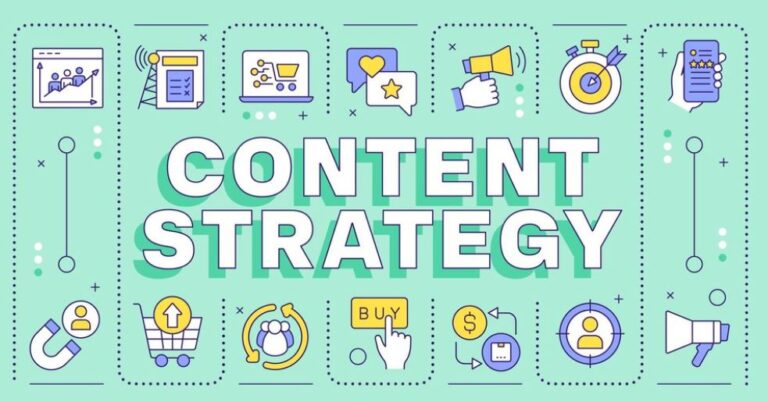In the ever-evolving world of technology, UI/UX design stands at the forefront of creating immersive, engaging, and user-friendly digital experiences. As we step into 2024, it’s crucial to stay ahead of the curve by understanding the latest trends set to redefine design standards.
This article delves into the top 10 UI/UX design trends for 2024, highlighting how they’ll influence the digital landscape and offering insights into the golden rules that continue to govern effective design strategies.
The Evolution of UI/UX Design
From Past to Present
The journey of UI/UX design has been marked by continuous innovation, adapting to users’ changing needs and preferences. From the simplicity of early web interfaces to the sophisticated designs of today, the evolution of UI/UX design reflects a broader shift towards more immersive and interactive digital experiences.
The Role of Technology in UI/UX Evolution
Technology has always been a driving force behind the evolution of UI/UX design. With advancements in AI, AR/VR, and other digital technologies, designers now have the tools to create more personalised and engaging experiences than ever before.
What Are the Top UI/UX Design Trends in 2024?
Immersive Experiences: AR and VR
2024 sees a significant push towards creating immersive experiences through augmented reality (AR) and virtual reality (VR). These technologies offer a new dimension of interaction, allowing users to experience digital content in a more engaging and lifelike manner.
Minimalism and Maximalism: Finding the Balance
The trends of minimalism and maximalism continue to coexist, with designers finding innovative ways to balance simplicity with bold, expressive elements. This balance ensures that designs are both aesthetically pleasing and functionally streamlined.
The Rise of AI in UI/UX Design
AI-Driven Design Solutions
Artificial intelligence revolutionises UI/UX design by offering more imaginative, efficient design solutions. From automating routine tasks to generating personalised user experiences, AI is a game-changer in design.
Personalisation and AI
AI’s ability to analyse user data and preferences enables unprecedented levels of UI/UX design personalisation. This trend towards tailored experiences ensures users feel valued and understood, enhancing overall engagement and satisfaction.
Sustainability in Design
Eco-friendly Design Practices
As global awareness of environmental issues grows, sustainability has become a key UI/UX design consideration. Web designers are adopting eco-friendly practices, from minimising energy consumption to choosing sustainable materials, to contribute to a greener digital future.
Accessibility and Inclusivity
Accessibility and inclusivity remain crucial aspects of sustainable design. Ensuring that digital products are usable for everyone, regardless of ability or background, is not just a trend but a fundamental principle of modern UI/UX design.
The Golden Rules of UI/UX
Consistency and Simplicity
The golden rules of UI/UX design emphasise the importance of consistency and simplicity. A consistent design language and straightforward navigation are key to creating intuitive and enjoyable user experiences.
User-Centric Design Principles
A deep understanding of the user is at the heart of effective UI/UX design. Design decisions should always be made with the user’s needs and preferences in mind, ensuring that the final product is beautiful and highly functional.
Voice User Interface (VUI) and Conversational UI
Integration with Everyday Devices
Voice user interfaces (VUI) and conversational UIs increasingly integrate with everyday devices, from smartphones to smart home systems. This trend highlights the shift towards more natural and intuitive technology interaction.
Enhancing User Experience Through Conversation
By facilitating more human-like interactions, VUI and conversational UIs are enhancing the overall user experience. These interfaces make digital interactions feel more personal and engaging, fostering a deeper connection between users and technology.
Dark Mode and Low Light UX
Benefits of Dark Mode
Dark mode has gained popularity for its aesthetic appeal and practical benefits, including reduced eye strain and lower energy consumption. As more users prefer dark mode settings, designers prioritise this feature in their digital products.
Implementation in Various Platforms
The widespread adoption of dark mode across various platforms demonstrates its importance in modern UI/UX design. From mobile apps to web interfaces, dark mode is becoming a standard option for users seeking a more comfortable digital experience.
Microinteractions and Animation
Enhancing User Engagement
Microinteractions and animations play a crucial role in enhancing user engagement. These subtle design elements add a layer of interactivity and delight, making digital experiences more dynamic and enjoyable.
Examples of Effective Microinteractions
From the satisfying click of a button to the smooth transition between screens, effective micro-interactions contribute significantly to the overall user experience. These details may seem minor, but they profoundly impact how users perceive and interact with digital products.
3D Elements in UI Design
Creating Depth and Realism
The use of 3D elements in UI design is rising, offering a new level of depth and realism to digital experiences. Whether through sophisticated animations or interactive 3D models, these elements bring a tactile dimension to the digital world.
Use Cases in Web and Mobile Apps
3D elements are being incorporated into various web and mobile apps, from e-commerce platforms to educational tools. This trend enhances the visual appeal of these applications and improves user engagement and retention.
Neumorphism and Glassmorphism
Characteristics and Applications
Neumorphism and glass morphism are design trends characterised by their unique use of shadows, depth, and transparency to create a soft, almost tactile quality. These styles are applied in various digital products, offering a fresh and modern aesthetic.
Pros and Cons
While these design trends offer visually stunning results, it’s important to consider their usability and accessibility. Designers must strike a balance between aesthetic appeal and practical functionality to ensure that these styles enhance rather than hinder the user experience.
Mobile-First Design
Importance in Today’s Digital Age
Mobile-first design has become more important than ever in an era where mobile usage continues to surge. Designers prioritise mobile experiences, ensuring that websites and apps are optimised for smaller screens and touch interactions.
Best Practices for Mobile UX
Adopting a mobile-first approach involves more than just scaling down desktop designs. It requires a thorough understanding of mobile user behaviour and preferences, as well as the implementation of design principles tailored explicitly to mobile environments.
The Impact of AI on UI/UX Design in 2024
Predictive User Interfaces
Predictive user interfaces powered by AI are set to become more prevalent in 2024. These interfaces anticipate user needs and actions, offering suggestions and automating tasks to streamline the user experience.
Enhancing Creativity and Productivity
AI is not just automating tasks; it’s also enhancing the creativity and productivity of designers. By handling routine tasks, AI allows designers to focus on more complex and creative aspects of UI/UX design, pushing the boundaries of what’s possible.
Conclusion
The UI/UX design trends for 2024 reflect a broader move towards more personalised, interactive, and sustainable digital experiences. As designers, embracing these trends means not only staying ahead in the industry but also contributing to creating more inclusive, engaging, and user-friendly digital products. The future of UI/UX design is bright, and by adhering to the golden rules of design, we can ensure that technology continues to enhance human experiences in meaningful ways.
Frequently Asked Questions
1. How will AI impact UI/UX Design in 2024?
AI is poised to transform UI/UX design significantly in 2024. By integrating AI technologies, designers can expect to deliver smarter, highly personalised design solutions that cater directly to individual user preferences. Automating routine design tasks through AI will not only streamline the design process but also unlock higher levels of creativity and productivity. This evolution means users will enjoy more intuitive and tailored experiences, setting a new standard for UI/UX design efficiency and innovation.
2. What Are the Golden Rules of UI/UX Design?
The golden rules of UI/UX design form the foundation for creating exceptional digital experiences. These principles, focusing on consistency, simplicity, and a user-centric approach, ensure that UI/UX designs are not only intuitive and enjoyable but also effectively meet the specific needs of users. Adhering to these guidelines helps designers create seamless and accessible interfaces that enhance user engagement and satisfaction, which are crucial for the success of any digital product.
3. How Can Designers Stay Ahead of UI/UX Trends?
For designers to stay at the forefront of UI/UX trends, embracing a mindset of continuous learning and adaptability is essential. This involves regularly exploring new technologies, tools, and design methodologies and actively seeking and incorporating user feedback to refine and innovate design practices. By staying informed about the latest trends and understanding evolving user expectations, designers can ensure their work remains relevant, fresh, and ahead of the curve.
4. What Role Does User Feedback Play in UI/UX Design?
User feedback is a cornerstone of effective UI/UX design, offering direct insights into users’ needs, preferences, and challenges. By actively soliciting and analysing user feedback, designers gain valuable information that guides the design process, ensuring decisions are informed and aligned with user expectations. This iterative approach enhances the usability and effectiveness of designs and fosters a deeper connection between users and products, ultimately leading to improved user satisfaction and loyalty.
5. How Does UI/UX Design Contribute to a Brand’s Success?
UI/UX design is a critical driver of brand success in today’s digital-first world. By creating engaging, user-friendly experiences, UI/UX design helps build strong brand loyalty and a positive brand identity. A well-executed UI/UX strategy differentiates a brand in a competitive digital landscape, encouraging repeat engagement and promoting positive word-of-mouth. Ultimately, exceptional UI/UX design translates into higher conversion rates, customer retention, and overall brand growth, marking it as an indispensable element of a brand’s success strategy.

